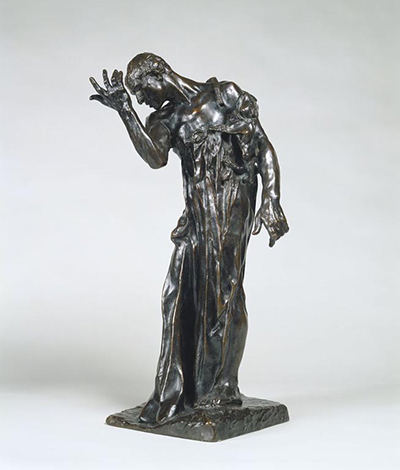Pierre de Wiessant by French artist Auguste Rodin is a bronze sculpture that is part of The Burghers of Calais. The sculptural group represents the six burghers who surrendered to Edward III of England in 1937. It was the beginning of the Hundred Years War, and the burghers gave up to the English rule to prevent them from laying siege to Calais.
Pierre de Wiessant was one of the burghers who Rodin did nude studies on between 1884 and 1886. After the nude study, the artist put a wet canvas on it to get a glimpse of how he would look clothed. Rodin used sackcloth on the burgher because, supposedly, that is what he wore in real life. The sculpture of Pierre de Wiessant is a careful reflection of the emotions that the burgher felt during the surrender. His figure is contorted in a slight twist that seems to echo his anguish. The burgher's left side is a bit straight with his arm at the side, and a rope draped across the shoulder. However, the right side is slanted, with the foot dragging behind.
His arm is raised in front of his face as if to shield it. This stance shows a conflicted demeanour. On one side, the burgher is erect, seemingly sure about the decision to surrender. On the other, he shows hesitation, like he wants to go back to where he came from. Although the sculpture depicts him as a strong man, the rope on his shoulder symbolises defeat. His raised arm is a feeble attempt to protect himself from the fate that awaits him. The sculpture was done in a brown patina and had the artist's signature on the left side of the base. Before Rodin did the final sculpture, he did two models of the burgher.
Although the final sculpture is clothed, the body contours are easily traceable. Auguste Rodin was famous for infusing realism into his sculptures, which is evident here. As a condition for the surrender of the burghers of Calais, Edward III required them to wear nooses, and Rodin did not forget this little detail. The mayor of Calais approached Rodin with the idea of creating monuments for the burghers. Rodin chose to showcase the burghers on their way to surrender so that he could capture the inner combat between the fear of dying and the noble cause.




